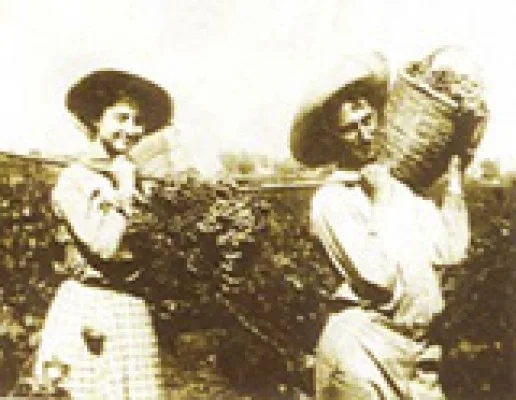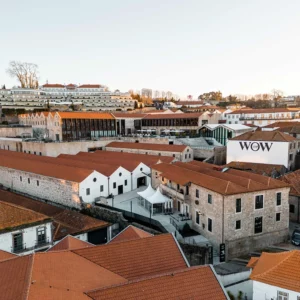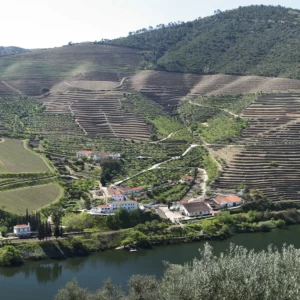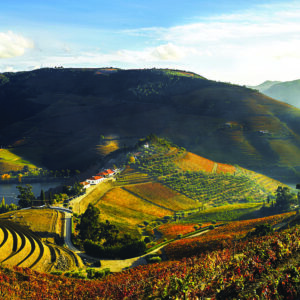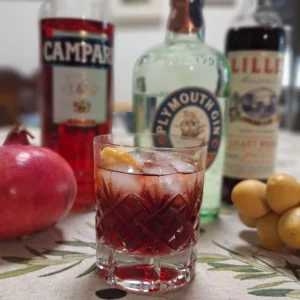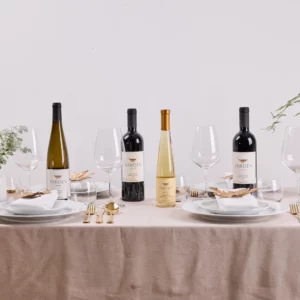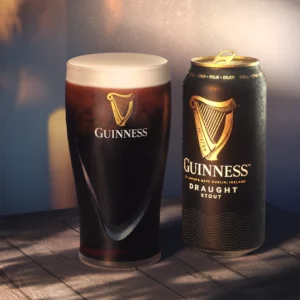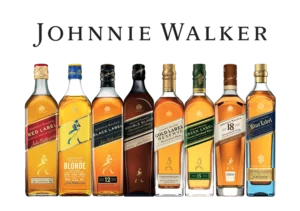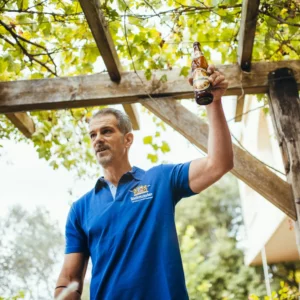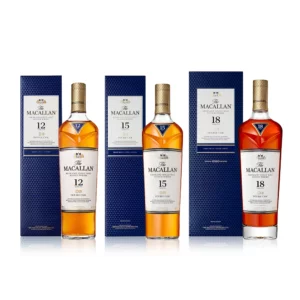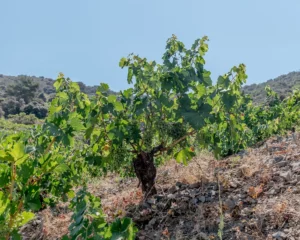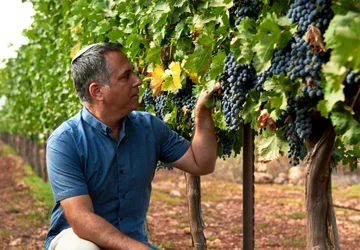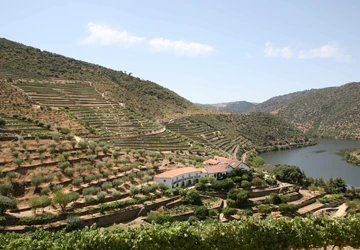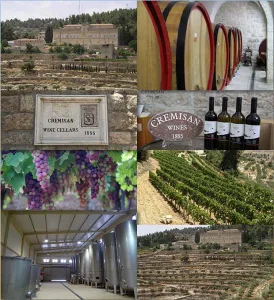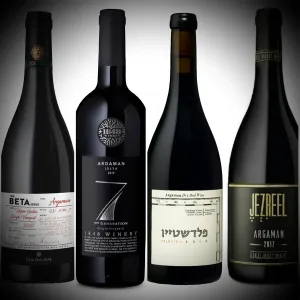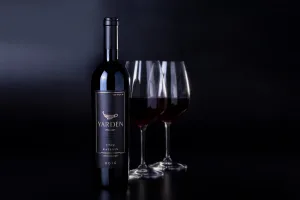Wine History 1848 – 1948
In the Israel of the nineteenth century, a few small wineries were owned by Jews. These were small household presses catering mainly to local consumption and religious needs. The raw materials were supplied by the few Arab vineyards in the surrounding hills, particularly from Bethlehem and Hebron. The grapes were undistinguished and local with names like Hebroni, Dabuki and Zeitani. The vines had almost disappeared due to the law forbidding Moslem believers to drink alcohol. However, it was noted how well wild vines and olive trees adapted to the shallow soils of the hills and foothills, and the coarse sandy soils of the plains.
At the time there were moves to encourage Jews to return to agriculture so that they could become self-sufficient instead of surviving on charity and philanthropy. An Englishman, Sir Moses Montefiore, the most prominent visitor to Eretz Yisrael during this time, was one of the first to publicly urge the planting of vines and olive trees so that the Jews might learn to support themselves. In 1855 Montefiore purchased the first land intended to be used for Jewish agriculture. He drank a bottle wine every day and lived to be 100 years old an early advertisement for the healthy properties of wine !
The first recorded winery was opened in 1848 by a Rabbi Yitzhak Shor in the Old City of Jerusalem with the winery itself backing onto The Western Wall. This coincided with the third of Montefiore’s seven visits to Palestine. The Shor family stayed in the Old City for eighty years before moving to modern Jerusalem. There were many home based wine producers. Shors beginning is remembered because his descendants stayed in the business, today owning wineries such as Arza, Hacormim & Zion. The only other Old City business which has survived is a wine and spirits retailer called Efrat, which was founded by Rabbi Avrom Teperberg in 1870. They then specialized in selling wines and spirits to Christian pilgrims, but later became a small winery.
Mikveh Israel
However a more significant beginning was the founding of the Mikveh Israel Agricultural School in southeast of Jaffa. The school, under French patronage and managed by Charles Netter from Alsace, emphasized the new importance of agriculture to a Jewish community that previously avoided it. Mikveh Israel Wine Cellars, on the same site, were the first to use European varieties. Many of the new wave of immigrants who “returned to Zion” towards the end of the nineteenth century, learned the rudiments of agriculture at the school, before planting vineyards in the places where they were to settle. The agricultural school still exists on the original site, near the town of Holon, but sadly the winery is no longer operational.
With the beginning of modern Jewish settlements in 1882, the urge to return to the land intensified. The new immigration wanted to escape the pogroms in eastern Europe and to reclaim the land of their forefathers. They were idealists, unused to physical work, who went through unspeakable hardships.
In 1882 the struggling new settlers of Rishon Le Zion sought financial support from Baron Edmond de Rothschild, a Paris banker. He not only offered support but at the end of 1882 commisioned a report to check out the agricultural possibilities in what was a barren land – too sandy on the coast and too stony on the hills. One of his expert horticulturists from Palace of Versailles at this early stage recommended vineyards as being the solution.
Initially efforts were made to plant wheat and potatoes, which were dietary necessities. When it was clear this would not work, the settlers formally turned to grapes planting from cuttings received from Mikveh Israel. These experimental plantings were successful. Following this period of trial & error, the settlers started to plant more vineyards from 1884. Rothschild, who sponsored early Jewish pioneer settlements in the Land of Israel, had high hopes that viticulture would develop as the main economic basis for the Jewish villages. What they did not yet appreciate was that Edmond de Rothschild was owner of Chateau Lafite, one of the most famous wineries in the world.
Baron Edmond de Rothschild
Following Rothschilds visit to Palestine in 1887, the wine project was given a financial and directional boost. Rothschild was determined to make viticulture succeeed. He created a team of experts including Gerard Ermans, an agronomist, Professer Gayon from the Bordeaux Station of Wine & Viticulture and Charles Mortier, the winemaker and manager of Chateau Lafite. Rothschilds vision was to make a fine Bordeaux style, Israeli wine. He insisted on planting Cabernet Sauvignon, Malbec and Cabernet Franc, against the advice of some of his managers in Israel. Cuttings were supplied from Chateau Lafite itself. In an attempt to bypass phylloxera, other cuttings were brought to Israel from Kashmir in India.
Rothschild then built large above-ground wineries at Rishon Le Zion in 1890 and at Zichron Ya’acov in 1892, and sent a Bordeaux winemaker to take charge. The first harvests were wasted due to the immense heat. Large blocks of ice, cooling spirals filled with cold water were put into the fermenting wine to reduce temperatures, but this was not successful and the wine was lost. In the end, at enormous cost, Rothschild decided to build deep underground cellars at both Rishon le Zion & Zichron Yaacov in order to keep the wine at a constant temperature. The project was begun in 1893 and finished in 1896. The wine cellars at Rishon Le Zion cost the Baron 6 million French francs and at Zichron Yaacov the cost was 5 million francs. By comparison, the purchase of Chateau Lafite had only cost the Rothschild family 4 million francs! This does not include the large investment in the vineyards. The Baron always paid a high price for grapes in order to assure the settlers a decent standard of living, and subsidized them during the frequent early disasters. The worst of these was when phylloxera struck in the early 1890s.
Rishon Le Zion and Zichron Yaacov
Rishon Le Zion, (meaning first to Zion ) was the first of the new settlements in modern Israel. The town, south of Tel Aviv, now numbers more than 250,000 people and is a far cry from the few pitched tents in the sand which can be seen in early photographs. The winery became a living symbol of Zionism and part of the history of modern Israel. The main winery building was where electricity and the telephone were first used in Israel! Later David Ben Gurion, Israels first prime minister would work there. The winery remains fully operational in the center of town to this day the oldest industrial building and the oldest winery, still in use in modern Israel!
Zichron Yaacov was a pastoral village built on the southern slopes of Mount Carmel, overlooking the Mediterranean Sea. Over the years it has still maintained its pre-state atmosphere. The name Zichron Yaacov (which is translated in memory of Jacob), was in honor of Baron James Jacob de Rothschild, Edmonds father, who bought Chateau Lafite for the Rothschild family in 1868.
Carmel Wine Company
In 1895 the Carmel Wine Company was formed to market the wines of Rishon Le Zion and Zichron Ya’acov Wine Cellars. The first export office was opened in Warsaw, followed by Vienna (1897), Berlin, London (1898) and New York (1900). The Company in Britain was known as “Palestine Wine Co.” and the main wines were called Palwin. This brand name is still used there for kiddush and sacramental wines. In 1902 the name Carmel Mizrahi was first used to denote the company marketing wines to the Near East. (Mizrahi means eastern or oriental.) Their market was then Damascus, Beirut, Alexandria, Istanbul as well as Jaffa and Jerusalem within Palestine. The root word of Carmel means Gods vineyard.
The first major award to be given to an Israeli wine was the Gold Medal presented to Carmel No.1 at the famous Paris Exhibition of 1900. Carmel shared the winners podium with some of Bordeaux most famous Chateaux ! In those days wines were known by numbers being easy for new immigrants to identify.
Formation of The Wine Growers Cooperative.
In 1906 the management of the Wine Cellars at Rishon le Zion and Zichron Ya’acov was deeded to the wine growers, who founded the “Socit Cooperative Vigeronne des Grandes Caves, Richon-le-Zion and Zichron Jacob Ltd.”. The registration of the name in French was in recognition of the Baron’s contribution.
It was already apparent that Rothschilds dream of making a fine Israeli Bordeaux style wine would not yet be realized. Yields of the classic varieties were too small for the growers and the market preferred cheaper, bulk wine and sacramental wine. So those varieties producing the biggest yields most cheaply were planted at the expense of the noble varieties preferred by Rothschild. Most of the vineyards were planted in the coastal region of Israel, around Zichron Yaacov and south east of Rishon Le Zion.
Carmel was by far the largest winery. There were other small wineries servicing their own communities. For instance wineries like Shor Brothers sold to the Ultra Orthodox Jewish community, the Templars in Sharona and the monasteries of Latroun and Cremisan sold to Christian pilgrims. There were also other wineries, like Friedman from Petach Tikvah, but none impacted the commercial control of Carmel.
The wine business expanded and sales increased particularly during the First World War, when German, British and Australian troops passed through the country. When the war was over though, the industry lost its principal markets: Russia, because of the Revolution; the United States because of Prohibition and Egypt and the Middle East because of Arab nationalism. Many vineyards were replaced with citrus groves, almonds and olive trees.


